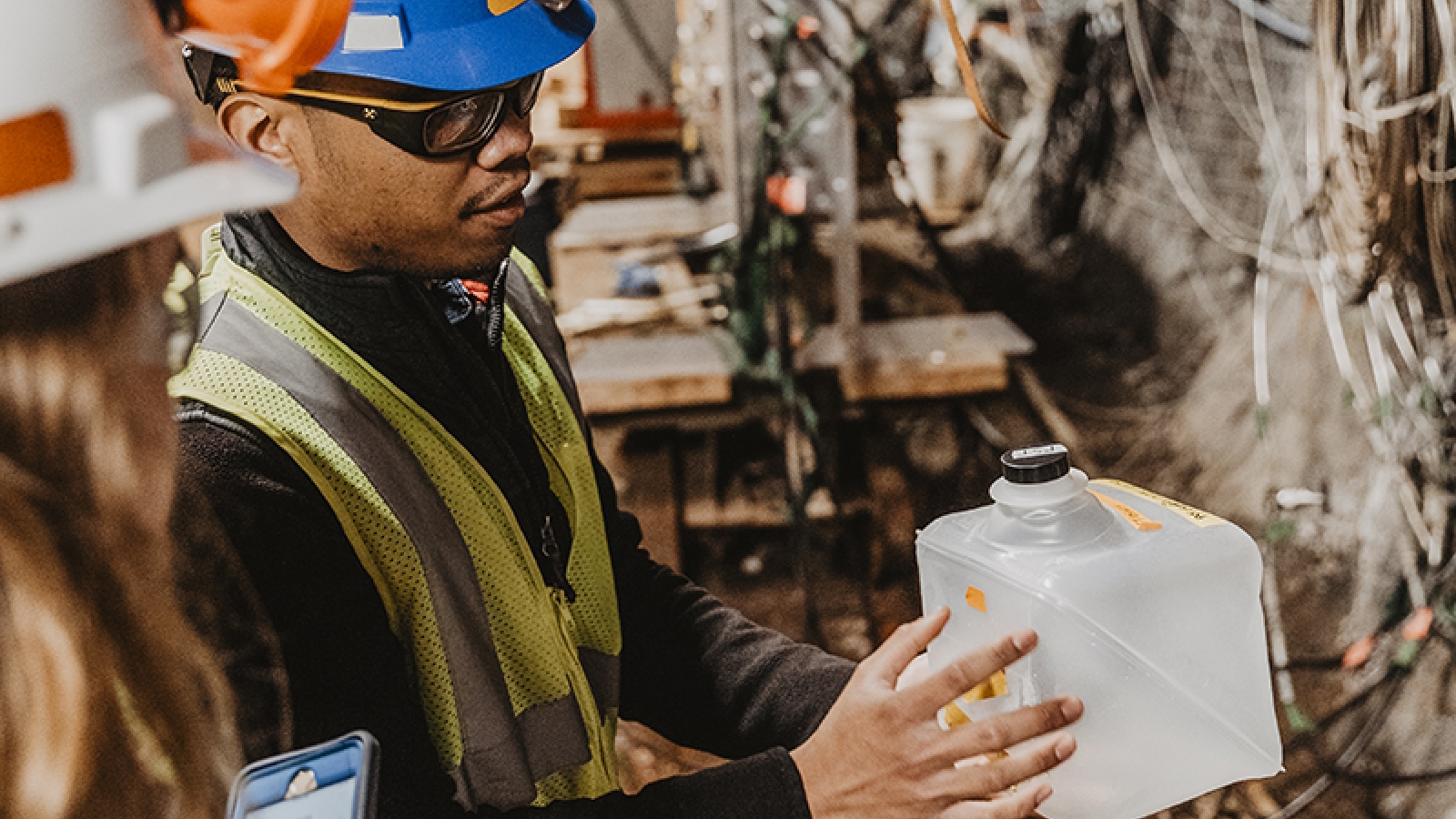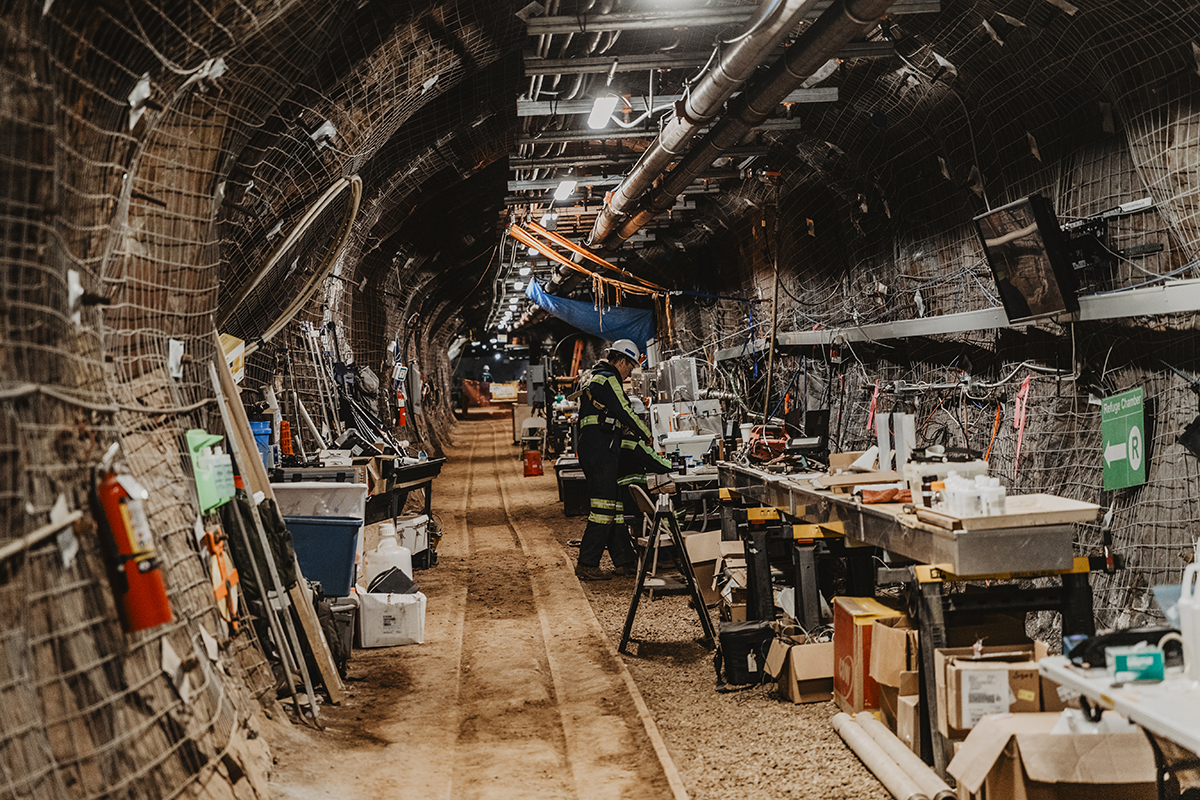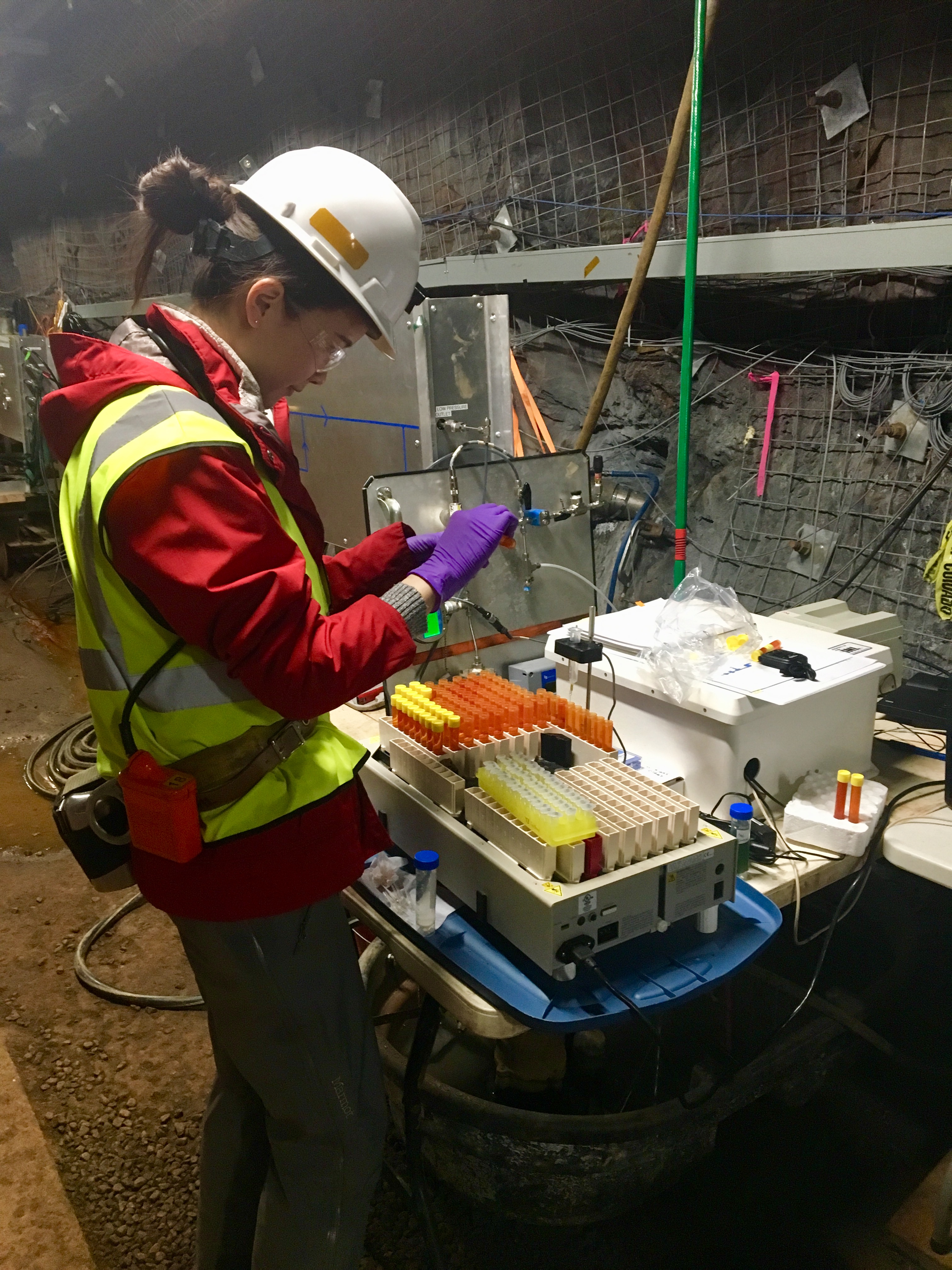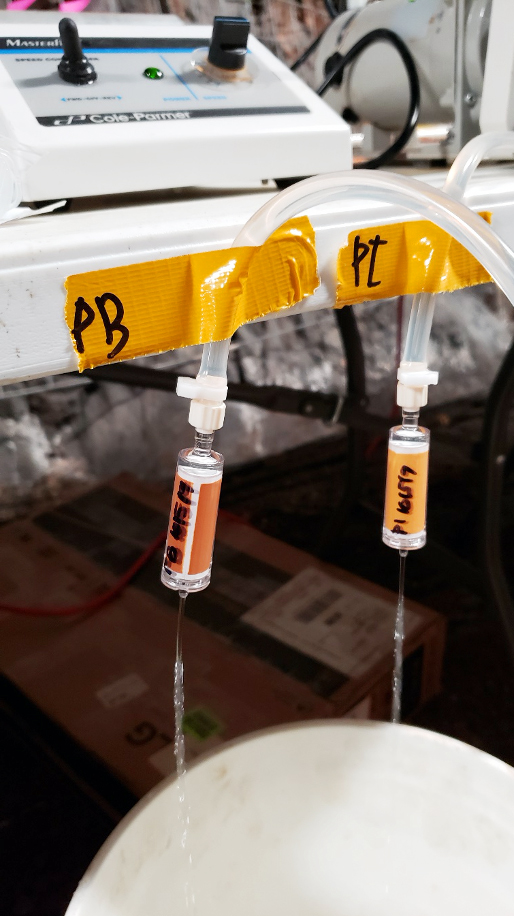
Researchers collect water samples containing an invisible diversity of microbes from boreholes at a testbed on the 4850 Level of Sanford Lab.
Beneath our feet, rivers trickle, swell, then gush through natural fractures in the Earth’s crust. Studied extensively by geologists and reservoir engineers, these complex subterranean networks sidestep direct measurements, preferring to flow mysteriously through opaque passageways.
At a testbed on the 4850 Level of Sanford Underground Research Facility (Sanford Lab), researchers walk drifts adjacent to these pathways. Just inches from dribbling underground streams, researchers with Enhanced Geothermal Systems Collab (EGS Collab) are trying to find better ways to extract heat from the earth’s hot rocks for the Department of Energy’s FORGE project (Frontier Observatory for Research in Geothermal Energy). If the project is successful in extracting natural heat, it could one day act as an enormous, domestic, clean energy resource.

The project requires creating sophisticated models that can predict how water travels through fractures in rock, absorbing the heat that seeps from geothermal hot spots. This proves challenging.
“Geothermal reservoirs are famously difficult to understand,” said Roland Horne, a professor of energy resources engineering at Stanford University and member of EGS Collab. “They are based upon fractures, unlike other reservoirs that are found in more uniform, sedimentary porous rocks.”
However, a team of researchers with the EGS Collab may have recently unlocked a new way to map underground water movements: by asking microorganisms for directions.
Traditional methods meet a novel idea
Traditionally, researchers use environmentally friendly chemical tracers to follow water traveling through the earth. By injecting a trackable chemical into the reservoir then taking samples at outlet locations downstream, researchers can get a sense of where and how quickly the water is flowing.
Chemical tracers, however, are limited in their ability to track more complex systems.
“One challenge in chemical tracer testing is that we don’t have enough unique variations in the tracers,” explained Yuran Zhang, a doctoral student at Stanford University and member of EGS Collab. “That's a huge limitation when we are dealing with complex systems that have a lot of variation. Additionally, the reservoirs are likely not static. We may need to conduct multiple tracer tests just to get different snapshots of the reservoir.”
Due to the inflexibility of chemical tracers, researchers have begun developing tracers tagged with synthetic DNA. Unlike chemical tracers, DNA tracers have inexhaustible configurations, allowing them to be used for more complex reservoirs. Still, these injected tracers are only useful once researchers have established flow circulations between wells.
When Zhang started with the EGS Collab, her work involved both chemical and synthetic DNA tracers. Soon, Zhang wondered if they could advance the use of living organisms that colonize the subterranean network.
Because geologic reservoirs naturally harbor a significant fraction of Earth’s microorganisms, Zhang suggested harnessing the information already present in the rock.
“I suddenly realized that we may be able to use the entire microbial community population—not just a few microbes—that were already living in the waterways,” Zhang said. “If we took advantage of the entire community, it would be really helpful in constraining what really happens as the water is flowing through a formation.”

Testing a hypothesis
Two years ago, when the EGS Collab drilled the first boreholes on the 4850 Level, water spilled from the rock into Zhang’s collection tube. It was teeming with microscopic life.
“There are tons of microbes in these samples,” Zhang said. “In terms of distinct families, we have tens of families in each sample. In terms of unique DNA sequences, we have thousands.”

Since then, samples have been collected from flowing boreholes or fractures at or near the testbed to further explore the use of this novel data source.
Carlo Primo, science support with subcontractor with Lawrence Berkeley National Laboratory, has been onsite taking samples for the researcher team based at Stanford University. "Once a week, I take biological samples, recording water collection start and stop time, pH level, size of water sample and the amount of water that passed through the filters," Primo said. The samples are frozen on site with dry ice, temporarily stored at Black Hills State University, then shipped to Stanford University, where Zhang processes them in a geomicrobiology lab.

With these samples on hand, Zhang began asking how effective microbial community data could be to the field of reservoir engineering: Are these communities distributed evenly throughout deep subsurface environments? How similar should samples from the same fracture look? Is this method more useful than chemical tracers?
By sequencing and analyzing the microbial DNA, Zhang realized these microbes held a wealth of information about the origins of the water they lived in.
“The microbial community difference among boreholes or fractures is astonishing,” Zhang said. “You typically see completely different dominating families in samples from different sources.”
One group of samples with an unusually high overlap seemed to indicate that two of the boreholes were connected. Zhang decided to test the microbial data’s implications.
With core logs and sewer camera footages from the EGS Collab database as well as Sanford Lab’s records, Zhang was able to verify the information she had gained from her microbial data.
“That provides great corroboration with what we found using this different method,” Zhang said, who published these findings in Water Resources Research in November 2019.
Further research
More research is needed to understand just how viable this approach is to the mapping of vast underground reservoirs, especially when those reservoirs increase in temperature near geothermal hot spots, but Horne is optimistic.
“One of the unexpected potentials of microbes is that they are found at temperatures way hotter than anyone imagined they would ever be,” Horne said. “Certainly, at temperatures of commercial geothermal interests, microbes could prove useful.”
According to a recent article from Stanford Earth, applications extend beyond geothermal systems and could be used “to predict the spread of contamination, assess artificial fracturing effects or determine the potential for leakages, for example, when studying carbon sequestration.”
“These applications have one goal in common, which is a better understanding of the subsurface,” Zhang said. “In any application, there are great potential impacts, which can help people in multiple ways.”